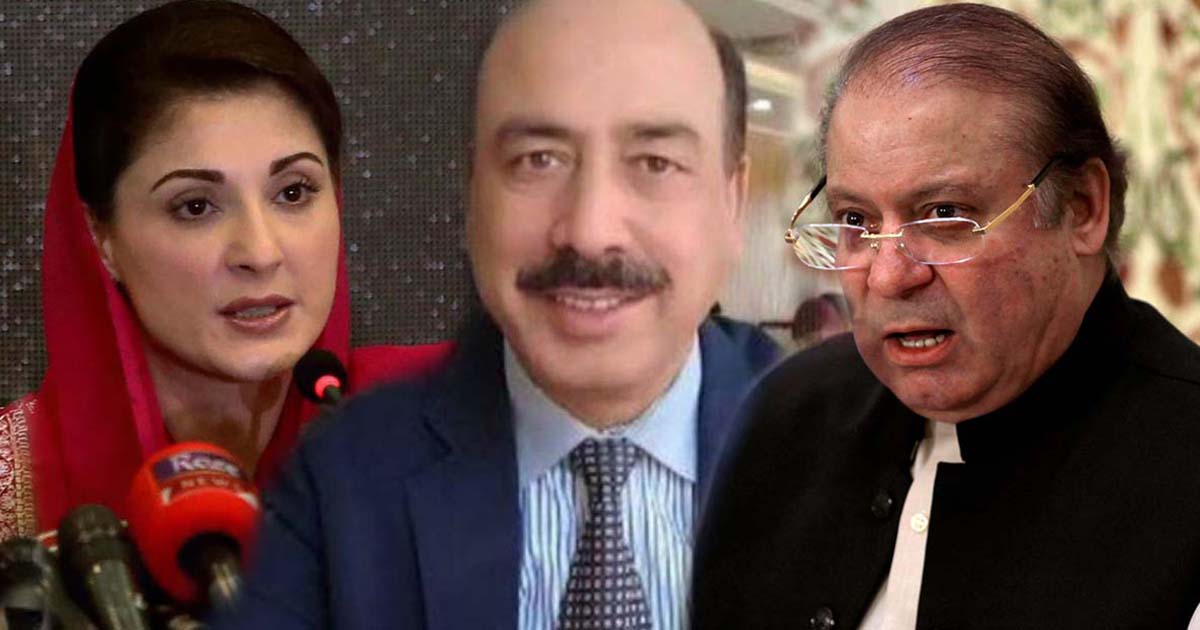News Desk |
The Supreme Court announced on Friday the judgment on several petitions pertaining to the video leak scandal involving the former accountability court judge Arshad Malik, who had convicted deposed prime minister Nawaz Sharif in the Al-Azizia corruption reference.
While announcing the judgment, Chief Justice of Pakistan (CJP) Justice Asif Saeed Khosa said that five main issues were before the court; including what was the possible impact of the video, if proven to be authentic, on the ruling by judge Malik in the corruption reference.
The Supreme Court announced the judgment on several petitions pertaining to the video leak scandal involving the former accountability court judge Arshad Malik.
The other issues included which forum or court was relevant for the case, whether the video can be presented as evidence; whether the video could be used as an authentic testimony, and lastly, the conduct of the judge – who met with Sharif at his residence in Lahore and Sharif’s son and others in Saudi Arabia.
In December 2018, judge Malik had handed the ousted premier seven years in jail in the Al-Azizia reference. He, however, had acquitted him in a second reference related to Flagship Investments.
SC’s three-member bench headed by CJP Khosa and comprising Justice Sheikh Azmat Saeed and Justice Umar Ata Bandial, heard three identical petitions filed by Ishtiaq Ahmed Mirza, Sohail Akhtar and Tariq Asad, who sought a directive from the apex court for the constitution of a probe committee or a judicial commission.
Read more: Judge Arshad Malik: A hard pill to swallow for PML-N
IHC repatriates judge to LHC for disciplinary proceedings
On Aug 22, the Islamabad High Court (IHC) repatriated the former accountability court judge Arshad Malik to the Lahore High Court (LHC) for the initiation of disciplinary proceedings against him.
In December 2018, judge Malik had handed the ousted premier seven years in jail in the Al-Azizia reference.
The judge, who has remained at the center of a video leak scandal that made headlines, was repatriated to Lahore High Court (LHC) a day after the Chief Justice of Pakistan Justice Asif Saeed Khosa wondered why the federal government had not repatriated judge Malik to the LHC for initiation of disciplinary proceedings against him.
On July 12, the Islamabad High Court (IHC) had removed judge Malik from his post amid a controversy surrounding the leaked videotape showing his purported confession that he had been “pressurized and blackmailed” to convict ex-PM Sharif in the Al-Azizia corruption reference.
Read more: Arshad Malik affidavit reveals explosive details
Honest judges felt ashamed due to judge Malik’s conduct: CJP
On August 21, CJP Khosa has remarked that the conduct of judge Malik has caused all honest, hard-working and dedicated judges to bow their heads in shame.
The CJP said that thousands of honest and upright judges in the country felt ashamed due to judge Malik’s actions. The remarks came during the hearing of the controversial video scandal case before SC.
Are videos real?
During the course of proceedings, the CJP observed that the case was related to two videos, including the one through which the judge was blackmailed while the other was made public by Pakistan Muslim League-Nawaz Vice President Maryam Nawaz at a press conference.
On Aug 22, IHC repatriated the former accountability court judge Arshad Malik to the LHC for the initiation of disciplinary proceedings against him.
Since Judge Malik has already stated that the objectionable video was real, Justice Khosa said, inquiring how could the veracity of the other one played at Maryam’s press conference be confirmed.
Attorney General for Pakistan Anwar Mansoor Khan said a forensic examination of the first video had been carried out, but it was difficult to ascertain the authenticity of the second one played at Maryam’s press conference because it was taken from YouTube.
To this, CJP Khosa remarked that experts should be consulted as to whether a forensic audit of the video could be done. To the question, if anyone has moved the high court to get relief on the basis of the video, the attorney general replied in the negative.
Read more: Judge Arshad Malik removed. Whose victory is it?
Video controversy
After the judge was embroiled in the video scandal, he had submitted an affidavit in IHC refuting Pakistan Muslim League-Nawaz (PML-N) Vice President Maryam Nawaz’s claims and revealed other information related to the controversy.
In the affidavit, the judge had denied the contents of the video, saying it was edited, fabricated, and aimed to defame him. The video showed him admitting to a lack of evidence against former prime minister Nawaz Sharif.
Judge Malik has already stated that the objectionable video was real.
In the press conference, Maryam had alleged that the judge had contacted a PML-N worker, Nasir Butt, and told him that he was feeling guilty and having nightmares ever since he announced the verdict that led to Sharif’s imprisonment in the Al-Azizia Steel Mills reference.
She had added that the judge was “blackmailed” into handing down the sentence against Sharif after some people threatened him that they would release a private video of him if he did not award sentence to the ex-PM.
Read more: Honest judges felt ashamed due to judge Malik’s conduct: CJP
During the presser, Maryam had claimed the judge was under immense pressure to send Sharif to jail, and that he had contemplated committing suicide several times since. She added that the judge did not write the verdict but “was made to write” the prison sentence for Sharif.
Later, the judge had called the video fake and demanded legal action against those involved in producing the videotape.














